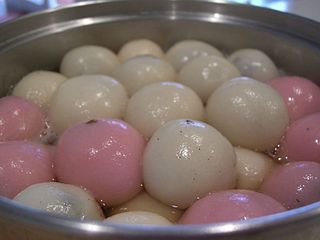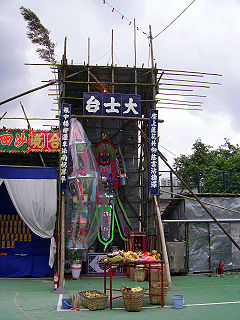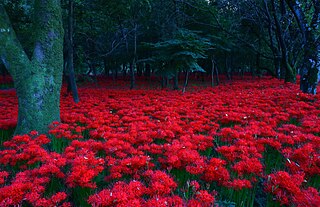 W
WBodhi Day is the Buddhist holiday that commemorates the day that Gautama Buddha (Shakyamuni) is said to have experienced enlightenment, also known as bodhi in Sanskrit and Pali. According to tradition, Siddhartha had recently forsaken years of extreme ascetic practices and resolved to sit under a peepal tree, also known as a Bodhi tree, and simply meditate until he found the root of suffering, and how to liberate oneself from it.
 W
WObon or just Bon is a Japanese Buddhist custom to honor the spirits of one's ancestors. This Buddhist–Confucian custom has evolved into a family reunion holiday during which people return to ancestral family places and visit and clean their ancestors' graves when the spirits of ancestors are supposed to revisit the household altars. It has been celebrated in Japan for more than 500 years and traditionally includes a dance, known as Bon Odori.
 W
WThe Dōngzhì Festival or Winter Solstice Festival is one of the most important Chinese festivals celebrated by the Mainland Chinese, Taiwanese, Hong Kong Chinese, Overseas Chinese, Japanese, Koreans, Vietnamese and other East Asian-related people during the Dongzhi solar term, some day between December 21 to December 23.
 W
WThe Ghost Festival, also known as the Zhongyuan Festival in Taoism and Yulanpen Festival in Buddhism, is a traditional Taoist and Buddhist festival held in certain East Asian countries. According to the Chinese calendar, the Ghost Festival is on the 15th night of the seventh month.
 W
WGozan no Okuribi (五山送り火), more commonly known as Daimonji (大文字), is a festival in Kyoto, Japan. It is the culmination of the Obon festival on August 16, in which five giant bonfires are lit on mountains surrounding the city. It signifies the moment when the spirits of deceased family members, who are said to visit this world during O-Bon, are believed to be returning to the spirit world—thus the name Okuribi .
 W
WHigan is a Buddhist holiday exclusively celebrated by Japanese sects for seven days; three days before and after both the Spring equinox (shunbun) and Autumnal equinox (shūbun). It is observed by nearly every Buddhist school in Japan. The tradition extends from mild weather that occurs during the time of equinoxes, though the origin of the holiday dates from Emperor Shōmu in the 8th century. People who normally worked in the fields had more leisure time to evaluate their own practices, and to make a renewed effort to follow Buddhism. The seasons beginning to change is a symbol that Buddhists should change their lives in order to reach enlightenment. Today, special services are usually observed in Japanese Buddhist temples, and Japanese temples abroad, based on the particular Buddhist tradition or sect.
 W
WŌmisoka (大晦日)—or ōtsugomori (大晦)—is a Japanese traditional celebration on the last day of the year. Traditionally, it was held on the final day of the 12th lunar month. With Japan's switch to using the Gregorian calendar at the beginning of the Meiji era, December 31 is now used for the celebration.
 W
WSanja Matsuri , or Sanja Festival, is one of the three largest Shinto festivals in Tokyo. It is considered one of the wildest and largest. The festival is held in honor of Hinokuma Hamanari, Hinokuma Takenari, and Hajino Nakatomo, the three men who established and founded the Sensō-ji Buddhist temple. Sanja Matsuri is held on the third weekend of every May at Asakusa Shrine. Its prominent parades revolve around three mikoshi, as well as traditional music and dancing. Over the course of three days, the festival attracts 1.5 to 2 million locals and tourists every year.
 W
WSetsubun is the day before the beginning of spring in the old calendar in Japan. The name literally means 'seasonal division', referring to the day just before the first day of spring in the traditional calendar, known as Setsubun; though previously referring to a wider range of possible dates, Setsubun is now typically held on February 3, with the day after – the first day of spring in the old calendar – known as Risshun . Both Setsubun and Risshun are celebrated yearly as part of the Spring Festival in Japan. In its association with the Lunar New Year, Setsubun, though not the official New Year, was thought of as similar in its ritual and cultural associations of 'cleansing' the previous year as the beginning of the new season of spring. Setsubun was accompanied by a number of rituals and traditions held at various levels to drive away the previous year's bad fortunes and evil spirits for the year to come.
 W
WThe Shuni-e is a ceremony held each year at certain Buddhist temples in Japan. The name comes from its observance in the second month of the lunisolar calendar. Today, the service is usually held in either February or March, depending on temples.